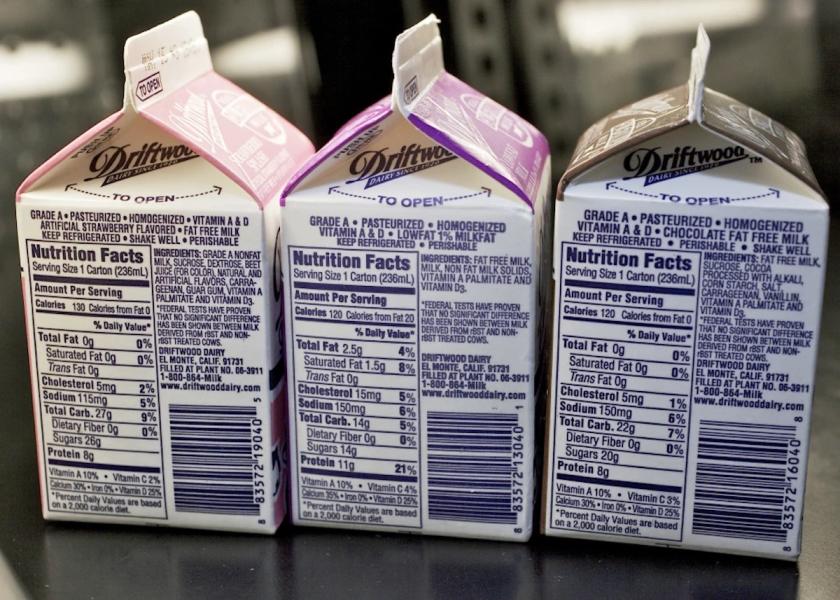Milk Carton Shortage Disrupts Dairy Marketplace

Supply chain issues once again are hitting the U.S. dairy industry. This time, it’s a shortage of milk cartons.
On October 25, 2023, the U.S. Department of Agriculture (USDA) issued a policy memo acknowledging that “schools in multiple states are experiencing milk supply chain challenges related to packaging issues.”
The memo empowered state agencies to allow USDA-funded milk program operators to forego program requirements if they were experiencing supply disruptions. Along with schools, single-serve cartons are widely utilized by hospitals, nursing homes, and prisons.
At the root of the issue appears to be a production backlog at Pactiv Evergreen, a packaging manufacturer in Lake Forest, Ill. Pactiv Evergreen bills itself as “the leading manufacturer of fresh food and beverage packaging in North America.”
The company has not offered an official explanation as to why it is not currently able to fulfill its orders. But a November 3 summary of the situation on the packaging industry website “Packaging Dive” noted that earlier in 2023, Pactiv Evergreen announced it was restructuring to combine its beverage and food merchandising businesses.
As a part of that strategy, the company closed a paper mill in Canton, North Carolina, along with a converting facility in Olmsted Falls, Ohio. The dual closures resulted in a total of approximately 1,300 jobs lost.
When the milk carton shortage began to emerge in September 2023, many dairy processors reached out to Tetra Pak, another major U.S. dairy packaging manufacturer. But Tetra Pak has since had to turn orders away, unable to meet the swift upswing in demand.
“Tetra Pak has increased overtime in our factory to ramp up production of single-serve, chilled gable-top cartons,” said Seth Tepley, president and CEO of Tetra Pak U.S. and Canada. “However, we do not currently have the production capacity to fully make up for the unexpected shortage, which means we are unable to fulfill every new request for additional supply.”
Meanwhile, schools in New York, California, Pennsylvania and Washington State are already being affected. In alternative strategies to continue to serve milk, some are exploring bulk milk dispensers and shelf-stable packaging. Others are pouring milk from plastic jugs into reusable or disposable cups.
Still others are embracing the USDA waiver and skipping milk altogether. A November 3 New York Times article shared a communications posting to parents from the Lake Stevens School District in northwest Washington. It stated: “Sometimes we may not have milk during breakfast or lunch. We plan to prioritize milk during breakfast when available.” The district also encouraged students to bring their own water bottles to school.
And Rochester, NY schools are offering students juice instead of milk, according to Rochester television news station WROC. Genesee County, New York dairy producer Kendra Lamb told the station she is very concerned about any issue that prevents getting milk in front of consumers.
“Because our product is quite perishable, certainly, any reduced demand would be a concern for us,” said Lamb. “We’re hopeful that our cooperatives are going to be able to…find another way to provide the wholesome milk to the people who need it.”
But New York State Assemblyman Chris Tague was less optimistic, calling the packaging shortage a “national crisis” on a recent post on X, formerly known as Twitter. “How we handle this situation is going to set a precedent for the availability of milk in schools,” stated the lawmaker and former dairyman. “And right now, it is not going in the right direction.”
International Dairy Foods Association spokesperson Matt Herrick said U.S. milk processors are working with other package suppliers to resolve the shortage, but projected the situation will carry into at least early 2024.








